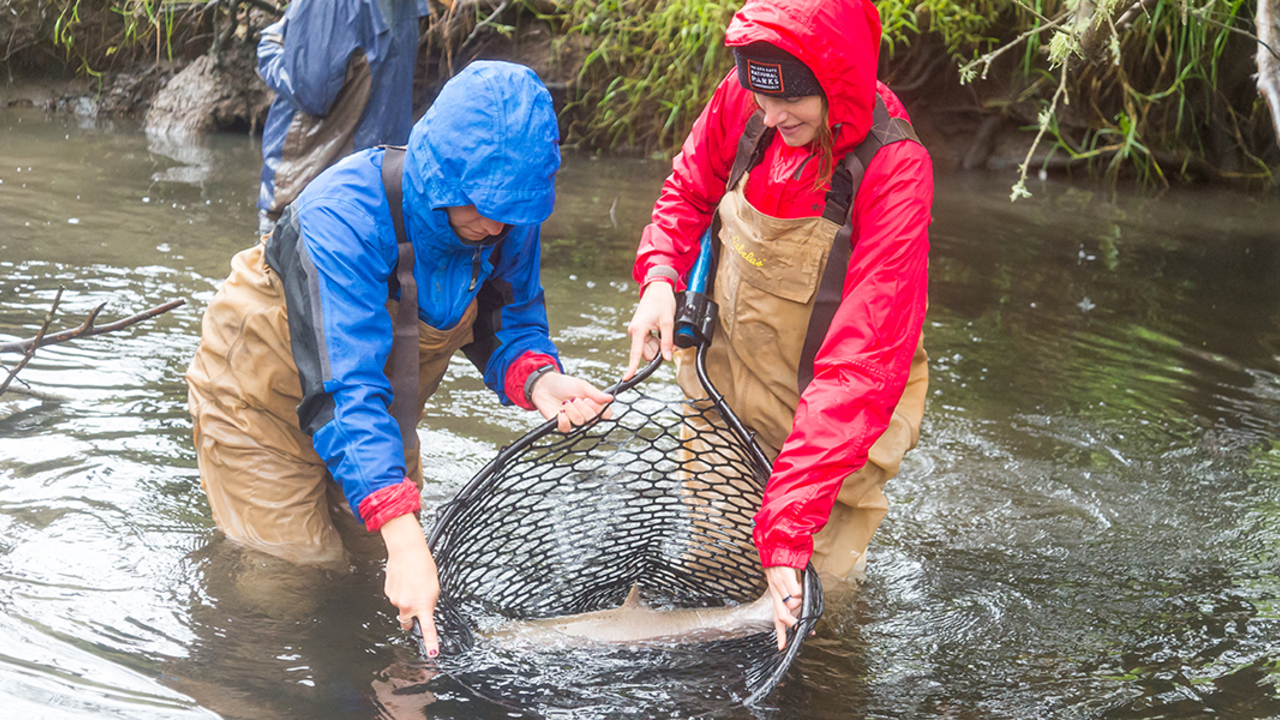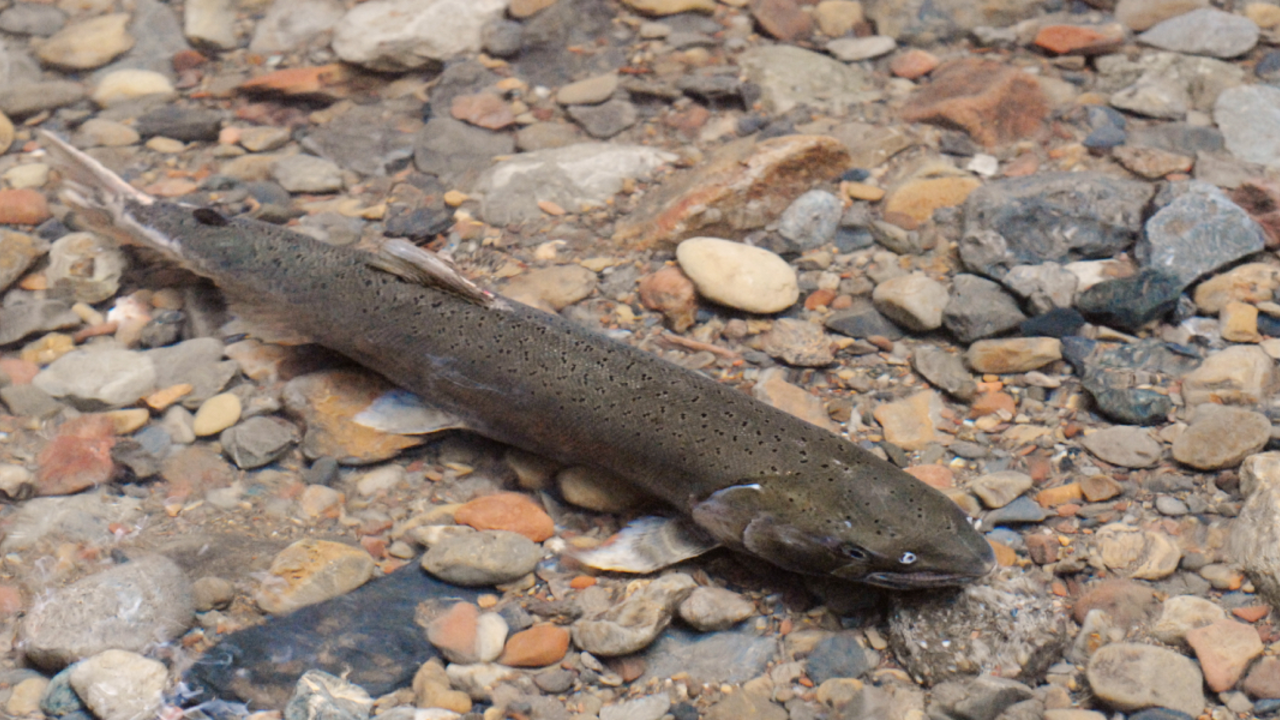Happy t[r]ails to the coho salmon of Redwood and Olema Creeks!

Alison Taggart-Barone/Parks Conservancy
By Elizabeth Aldenderfer
Park Stewardship Trail Program Intern
The coho are leaving! Over the past 6 months, alevins (young salmon) turned smolt (adolescent salmon) have been awaiting their cue—a nudge from the warming temperatures of spring—to venture to the ocean and become adults.
Some of these salmon began their lives in Redwood Creek last winter, when a large group of supporters from the local community and state and national parks released about 100 coho into Redwood Creek on the north side of Muir Beach. Redwood Creek is the natal stream for this group of coho, where the salmon were born and will return to spawn after their ocean journey in about 18 months. Because of their unique life cycle, coho spawn every 3 years; their “cohort” denotes the year they were born, and helps scientists monitor and reference them easily.
From the beginning of cohort 2018-2019’s migration, National Park Service (NPS) scientists have been using smolt traps in both Olema and Redwood Creeks to record the number and viability of smolt on their way to the sea. The numbers are in, and things are looking good! Smolt are being found in high number (over 950) and average size in Redwood Creek, and in low number (almost 100) and large size in Olema Creek. Size is one of the most important factors in viability of coho in the ocean, as larger fish have a better chance of evading predators and returning to spawn the next generation. According to the NPS, the newest cohort in Olema is the strongest since monitoring began. Even so, out of 1,500-3,000 eggs laid by each female, only 1-4 adult fish might return.
But why do we, the trail hikers, bikers, workers, and maintainers, care about the lives of a handful of fish? Let me reword that question. What motivates you to explore the parks, or to hike one trail versus another? Perhaps it’s for exercise, peace, inspiration, curiosity. Coho are an integral piece of the puzzle that keeps ecosystems like the ones around Muir Beach running smoothly, and in turn maintains the beautiful natural spaces we appreciate in our own ways. Coho are food for other animals, and, because they travel to and from the ocean during their lives, they spread unique nutrients to terrestrial plants and animals in their natal watersheds.
So the next time you find yourself jogging through the forest past Olema Creek or meandering on the beach by Redwood Creek, take a look around and mentally high five (high fin?) and wish happy t[r]ails to all those coho who helped create the beauty around you.
